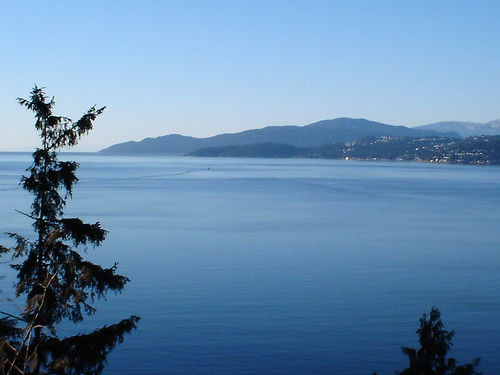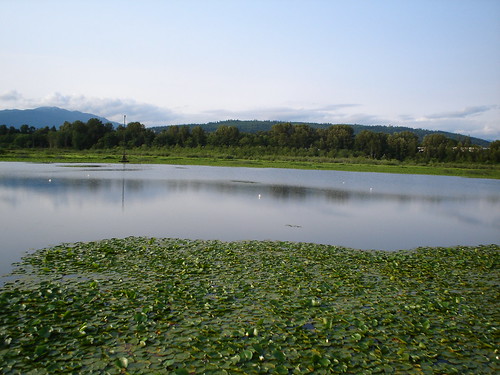 You might recall that I wrote a few days back about an invitation that Jered Love and Doug Van Spronsen from WaterDrop made recently. Jered and Doug asked me if I’d be willing to speak about the state of Canadian water within the global water issues context. Of course, I accepted gladly because I believe very strongly in the work that Doug and Jered are doing in regards to highlighting the relevance of water within the context of global environmental change. As I’ve mentioned before, many people are SO focused on climate change that they tend to forget that water IS also a natural resource that faces great challenges in the very near future.
You might recall that I wrote a few days back about an invitation that Jered Love and Doug Van Spronsen from WaterDrop made recently. Jered and Doug asked me if I’d be willing to speak about the state of Canadian water within the global water issues context. Of course, I accepted gladly because I believe very strongly in the work that Doug and Jered are doing in regards to highlighting the relevance of water within the context of global environmental change. As I’ve mentioned before, many people are SO focused on climate change that they tend to forget that water IS also a natural resource that faces great challenges in the very near future.

The event took place last night, with a showing of a video that WaterDrop created, a screening of the movie/documentary “Flow” and two talks, one by the folks of Run for Water (I’ll write more about them in the next few days) and my own. I’ll have my slides up on my research site in the next couple of days. On the way back, we were talking about the event and I mentioned that they should be proud, because bringing 70 people to Langley (at Trinity Western University) on a Saturday night to talk water, is not an easy task, and the participants stayed for much longer to talk to the folks who had exhibits at the event (the Township of Langley, Oxfam, the Council of Canadians). They did an amazing job and they also had several people who helped make the event successful, and I personally had a great time.

Water and energy are considered two of the most important and pressing environmental issues in the next 50 years. Unfortunately, so much emphasis is placed on the need for energy resources that not enough attention is paid to the myriad of issues surrounding water. Who has the right to access water? How can we make this access equitable? Is privatization the right way pathway for water conservation? What can we do to re-purpose wastewater and how safe is the technology? There are many, many questions regarding water that are still not answered. My research on water governance aims to tackle just a few of this questions.
 Only 3% of the world’s water supply is freshwater (the rest is salt water). This fact comes as a good reminder that today, March 22nd, 2009 is not only the second day of spring, but also the celebration of World Water Day. The theme for 2008 was Sanitation (where my main focus of water research is) and for 2009 is Transboundary Water.
Only 3% of the world’s water supply is freshwater (the rest is salt water). This fact comes as a good reminder that today, March 22nd, 2009 is not only the second day of spring, but also the celebration of World Water Day. The theme for 2008 was Sanitation (where my main focus of water research is) and for 2009 is Transboundary Water.
Over the last 60 years there have been more than 200 international water agreements and only 37 cases of reported violence between states over water. We need to continue to nurture the opportunities for cooperation that transboundary water management can provide. [World Water Day UN Site]
In my research, I have examined the way in which wastewater policy is created within a river basin that encompasses territory of five Mexican states (the equivalent of provinces in Canada). The 2009 theme of Transboundary Waters is very timely, because (as I found while conducting fieldwork for this project) water can be used not only as a natural resource but also as a political resource. When water bodies (aquifers or lakes or rivers) are shared amongst two political entities, conflicts about jurisdiction over the water bodies may potentially ensue. Right now, we don’t have water wars, but given the irresponsible consumption patterns that many individuals have, we may see real water fights in the near future.
How many transboundary river basins are there?
There are 263 transboundary river basins. Over 45 percent of the land surface of the world is covered by river basins that are shared by more than one country. Over 75 percent of all countries, 145 in total, have within their boundaries shared river basins. And 33 nations have over 95 percent of their territory within international river basins.
While most transboundary river basins are shared between just two countries, there are many river basins where this number is much higher. There are 13 basins worldwide that are shared between 5 to 8 countries. Five river basins, the Congo, Niger, Nile, Rhine and Zambezi, are shared between 9 to 11 countries. The river that flows through the most countries is the Danube, which passes through the territory of 18 countries.[UN World Water Day]
On this World Water Day, I encourage all my readers to re-think their consumption patterns, to think of ways to conserve and recycle water, to ponder how can each one of us contribute to the work of non-governmental organizations that are fighting tirelessly to provide safe drinking water to the many people in developing nations that don’t have access to clean water. Happy World Water Day.

0 Responses
Stay in touch with the conversation, subscribe to the RSS feed for comments on this post.